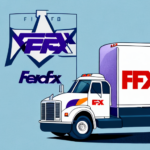Understanding Direct Signature Required in Package Delivery
Direct signature required is a secure package delivery method that mandates the recipient's signature upon delivery. This process ensures that packages are delivered safely to the intended individual, minimizing risks such as theft or loss. Commonly used for high-value items like electronics, jewelry, and sensitive materials, direct signature adds an extra layer of security to the delivery process.
The Importance and Role of Direct Signature in Package Delivery
Direct signature plays a crucial role in the logistics of package delivery. By requiring a signature, delivery services can confirm that the package has reached the correct recipient, thereby reducing fraudulent claims and ensuring accountability. According to the Shipping Industry Report, the implementation of direct signature requirements has decreased package theft incidents by approximately 15% over the past year.
This method is particularly vital for packages containing high-value or sensitive items, as it guarantees that only authorized individuals receive them. Additionally, regulatory requirements for certain types of goods, such as hazardous materials or controlled substances, often mandate direct signature to ensure compliance and safety.
Benefits of Direct Signature for Shippers and Recipients
Direct signature delivery offers significant advantages for both shippers and recipients:
- For Shippers:
- Enhanced security ensures that packages reach the intended recipient.
- Improved tracking and accountability reduce the risk of loss or theft.
- Protection against fraudulent claims of non-delivery.
- For Recipients:
- Peace of mind knowing that high-value items are securely delivered.
- Ability to confirm receipt of the package, ensuring accountability.
- Reduced risk of package theft from unattended homes.
Additionally, direct signature delivery allows for more accurate tracking of packages, providing clear records of delivery times and recipients. This transparency is beneficial in resolving any disputes or issues that may arise.
Managing Direct Signature Deliveries
Receiving a package that requires a direct signature can present challenges if you're not available at the time of delivery. Here are some strategies to manage such deliveries effectively:
- Authorize a Proxy: Designate a trusted neighbor, friend, or family member to sign for your package on your behalf.
- Request a Hold for Pickup: Many carriers allow you to hold the package at a nearby location for later pickup.
- Reschedule Delivery: Use the carrier's online tools or customer service to arrange a more convenient delivery time.
It's essential to be aware of your carrier's specific policies regarding direct signature deliveries, as options may vary. Proactively planning ahead can help prevent missed deliveries and ensure that your packages are received without issues.
Handling Issues with Direct Signature
Despite the security benefits, challenges can arise with direct signature deliveries. Here’s how to address common issues:
- Lost or Stolen Packages:
- Immediately contact the shipping carrier or shipper to report the issue.
- Provide necessary documentation to file a claim for a refund or replacement.
- Legal Implications:
- Signing for a package acknowledges receipt and its condition upon delivery.
- Inspect the package before signing; note any damages or discrepancies on the delivery receipt.
Timely action and proper documentation are crucial in resolving disputes or claims related to direct signature deliveries.
Comparing Direct and Indirect Signatures in Package Delivery
Understanding the difference between direct and indirect signatures can help you choose the best delivery option for your needs:
- Direct Signature:
- Requires the recipient to sign for the package in person.
- Ideal for high-value or sensitive items.
- Provides higher security and accountability.
- Indirect Signature:
- Allows the carrier to leave the package at a secure location if the recipient is not available.
- Suitable for lower-value items.
- Offers more flexibility but less security.
Choosing between direct and indirect signatures depends on the value and sensitivity of the package, as well as the recipient's availability.
The Future of Direct Signature in E-Commerce and Package Delivery
As e-commerce continues to expand, the demand for secure and efficient delivery methods like direct signature is expected to grow. Advances in technology, such as digital signatures and enhanced tracking systems, may further streamline the process. According to a 2023 report by the E-commerce Insights, the integration of artificial intelligence and machine learning will play a significant role in optimizing delivery routes and predicting recipient availability, potentially reducing the need for multiple delivery attempts.
However, the traditional direct signature method is likely to remain a staple in ensuring the safe delivery of high-value and sensitive packages. Innovations may enhance its efficiency and usability, but the fundamental need for secure and accountable delivery will continue to make direct signatures an essential component of the package delivery ecosystem.




















